|
Experiential learning resources for the innovative educator
The experiential learning process is very specific. So, the experiential learning approach is similar regardless of age group, skill level, subject area, and learning environment.
My classroom teaching experience is with high school life science students at a small charter school. I am now home with my own young kids and use the same principles of experiential learning with them as I did with my secondary students. This blog post is all about how I do that; how I adapt the experiential learning process to work for all ages.
A lot of what I write about here on this blog is about my experiences with high schoolers, and my resources are geared toward high schoolers as well. This leads to a lot of teachers and parents wondering if the experiential learning activities that I talk about or create resources for can be modified for younger audiences. The answer is a resounding yes! But how?
How to Implement the Experiential Learning Process with Any Age Group
Tip 1: Use the Characteristics of Experiential Learning as the Framework for the Process
Using experiential learning principles as your foundation for any learning experience regardless of age group might seem obvious, but I think the way that I talk about experiential learning has a secondary undertone, making it seem as if only high school students have the skills and capacity for such an undertaking.
This just isn't the case. There are specific characteristics of experiential learning. Age is irrelevant. The learning the process is experiential as long as you embrace the following:
You can make any learning activity experiential with these things in mind. You know your students, you know what they’re capable of. Plan with these elements and your student population in mind.
I have a free experiential learning activity planning mind map that you can use to iron out these details. Go grab that, and as you brainstorm activity ideas, keep factors such as age, subject area, class size, etc. in mind.
Tip 2: Personalize the Experiential Learning Process
As I mentioned above, personalization is a key element of experiential learning. So one of the most effective ways of adapting learning experiences to different age groups is to make sure the experience is personalized. Then, not only is the experience catered to an age group, but it’s fitting with each student’s unique abilities and needs as well.
In my experience, “age” in a learning context is fairly arbitrary. Learning experiences should be modified to support every students’ needs as an individual rather than age. So, as you plan experiential learning activities I encourage you to consider more than age. Look at the skill levels, interests, challenges, strengths, and backstories of your students as well. I do this with personal learning plans.
Tip 3: Consider Your Level of Involvement in the Experiential Learning Process and Tweak as You Go
As I’ve already mentioned, the level of self-direction, one element of experiential learning, will vary by age and/or skill level.
My high school students design and lead their own project-based learning experiences from start to finish. They choose their own topics, determine how they will gather information, write their own research questions, identify and communicate with community experts on their own, plan and create their own final products, coordinate and plan authentic presentations, etc. My high schoolers have planning, design, and execution templates to guide them through the process. I facilitate these experiences, but these projects are mostly student-designed and -directed. My 5 and 7-year-old children, on the other hand, couldn’t approach this experience in the same way. My five-year-old can’t read or write. They are in different phases of cognitive, social, and emotional development then my high schoolers. My 5 and 7 year olds are even in different phases of development from each other. Needless to say, young kids would need different levels of support than would high school students. What I do with my young children, then, is direct the experience while offering opportunities for choice on their part. They might choose the topic based on their interests, for example. Or they might choose a final product to create that reflects their interests or goals. A high school student might choose to create a documentary, for example, while a younger student might demonstrate learning with a more age-appropriate final product such as a 2-minute stop motion video. Even with this example of students having choice, the level of direct involvement by me would differ significantly between the two age groups. I wouldn't need to be by the side of a high school student every second of filming their documentary. They can do the research, figure out the technology, coordinate interviews, etc. on their own, with my guidance when needed. My preschooler and second grader, on the other hand, would need me to be present and directly involved in the stop-motion creation process, especially if they have never done stop-motion before. We would all be learning together. The overall experience could still be experiential with real-world, community-based, and authentic elements, but I do the bulk of the planning and my level of direct involvement is higher than it would be with my high schoolers. And of course, there is some in-between. As mentioned in the “personalization” piece of this, you’ll need to get a good read on your audience, and that means learning about their individual needs, skill levels, interests, etc. When you know the students you're working with, you will have a better understanding of the level of support and direction that they'll need from you. Look at the experiential learning experience and the level of teacher involvement on a spectrum: Teacher-directed --> Teacher-guided --> Student-directed. Over time and with with continued implementation of the experiential learning process, students will start to move along the spectrum, gradually gaining more skills and confidence in self-directing their own learning experiences. In summary, with each feature or aspect of any learning experience ask yourself, “Can my students do this themselves, will I do this part with them, or will I do this part for them?”
For example, project-based learning includes an authentic presentation piece where students share new skills and knowledge with a public and relevant audience.
Many of my high school students could coordinate this piece on their own. Some are not quite there yet and I would help them coordinate an authentic presentation. I would organize an authentic presentation for my 5 and 7-year-olds. They would offer their input along the way. Experiential learning is personalized and self-directed. So I can’t tell each of you exactly what to do for your specific age group or your level of involvement because each scenario is going to be unique. Developing learning experiences for ANY age group requires that you gauge their level of need and tweak as you go. Check out the examples below for clarity and inspiration.
Tip 4: Keep Age and Skill-appropriate Content in Mind When Coordinating Experiences
This tip is pretty self-explanatory. If I have to keep certain standards in mind, I would design learning experiences around age-specific standards.
If I am not tied to the standards, I would still design learning experiences around concepts that are developmentally appropriate. You'll also consider skills. As you spend more time working with your students you'll be able to gauge age or skill appropriate paths while adhering to the elements of experiential learning.
Tip 5: Adjust Your Expectations
I have had my high school students create similar end products. I wouldn't expect the same results from my 5 year old as I would from my senior.
That is fairly obvious, but again, the personalization piece matters here. I wouldn't necessarily expect all of my students to produce similar quality final products because "quality" is subjective. You're looking at growth, progress, improvement, and the ability to overcome challenges for EACH individual in addition to quality or as a gauge for quality. A final product from one student might not "wow" the average person, but that student might have produced something for the first time or have overcome an incredible road block. So again, get to know your students, and adjust your expectations from there.
Examples of Adapting the Experiential Learning Process for Different Age Groups
1. Habitats Project-Based Learning:
I’m going to go over an example of modifying a similar experiential learning activity and concept to an older and younger audience. I have done this activity with my classroom students, which ranges from 7th-12th grade, and with my own children who are 5 and 7 years old. This example, then, will show modifications for those two age groups.
Again, how much direction you offer will depend on your students or your group as a whole. So take a look at this habitats project-based learning example and work with it in your own way. The concepts revolve around ecological communities, populations, symbiotic relationships, etc., and the experience is designed around project-based learning principles.
High School/Middle School Experiential Learning Process:
Note: If you have already clicked on the button above for the free experiential learning mind map, you will also be sent an experiential learning activities spreadsheet. One of the pages on that spreadsheet is dedicated to self-directed PBL. That PBL spreadsheet includes common implementation steps that I take to facilitate self-directed PBL.
Pre K/Elementary Experiential Learning Process:
2. Energy Budget Experimental Inquiry:
Experimental inquiry is a fun experiential learning activity that is easy to modify for a variety of ages and skill levels. Experimental inquiry is one of those experiences that spans a spectrum of self-direction.
Experimental inquiry is conducting scientific experimentation from an inquiry approach. Experimentation is largely open-ended for my older, more experienced students. My younger students have more guidance and structure with inquiry based activities for science. The following is how I have modified an experimental inquiry activity on the concept of the energy budget (solar energy, absorption, reflection, etc.)
High School Experiential Learning Process:
Middle School Experiential Learning Process:
Pre K/Elementary Experiential Learning Process:
3. Animal Shelter Community Action Project:
My students of all ages love community action projects. In short, my students examine community issues (local/national/global), explore solutions, develop an action plan to tackle solutions, and take action. This experience is, regardless of age, real-world, personalized, and authentic. Again, the level of self-direction is what will vary amongst age groups. This example shows how different age groups have participated in domestic animal issues, such as the need for shelter.
High School/Middle School Experiential Learning Process:
Pre K/Elementary Experiential Learning Process:
Experiential learning, as you can see, is easily adapted to a variety of age groups. The trick is gauging the level of involvement on your part.
None of the examples above are specific to one age - 10 year olds, for example. Even an 18 year old might not have the confidence to completely direct their own learning experience. It takes time for any age group to travel along that spectrum for teacher-directed to student-directed. And that's okay! If you're looking for more examples of adapting experiential learning activities to fit different age groups and skills levels, check out some of the blog posts below, specifically, those that focus on examples of experiential learning activities for a variety of ages. The examples in those posts are less detailed than the ones provided here, but there are many examples that can be used for inspiration.
Looking for relevant blog posts? Look no further!
Looking for helpful resources?
,Yes, it is true that most of my ready-made resources are geared toward high school students; age-relevant standards, skill-levels, level of independence, etc. I do, however, have useful tools for experiential educators to apply to all age groups.
1. Project-Based Learning Design Workbook: I love this resource because it is a great way for younger students, beginner project-based learners (regardless of age), and even beginner experiential educators to design PBL's. The workbook includes a series of brainstorming templates to scaffold students (or you) through the PBL design process. This is a great tool for helping students gradually move along that spectrum noted above. Students can use this workbook to aid them in inching little by little along that spectrum, from teacher-directed to student-directed, over time. 2. Self-Directed Project-Based Learning Digital Planner: Project-based learning is my go-to experiential learning activity 99% of the time, so the majority of my examples and resources are geared toward PBL. This digital planner is currently organized for students that are 100% self-directed. However, the planner is editable, meaning it can be adjusted to fall along the spectrum of self-direction. Just tweak it to your needs. 3. Digital, Editable Personal Learning Plan: Experiential learning is largely about personalizing the experiences for students. Part of that requires learning about your students and understanding their needs, challenges, interests, etc. My high school students complete these personal learning plans independently. We then meet regularly to revisit those PLP's and tweak them. For younger students, we go through these personal learning plans together. I also edit the PLP's in a way that is fitting for the age group I'm working with.
Are you looking for other forms of support from Experiential Learning Depot?
Join our experiential learning Facebook group!
Did you know there is an experiential learning Facebook group? Check that out - Experiential Learning Community for K12 Teachers - and join in the discussion about experiential learning ideas!
Find us on social media!
Follow Experiential Learning Depot on Pinterest, Facebook, Youtube, and Instagram for more on experiential education, and check out my shop for experiential learning resources. Observe. Question. Explore. Share.
0 Comments
Your comment will be posted after it is approved.
Leave a Reply. |
Blog IntentTo provide innovative educational resources for educators, parents, and students, that go beyond lecture and worksheets. AuthorSara Segar, experiential life-science educator and advisor, curriculum writer, and mother of two. Categories
All
|
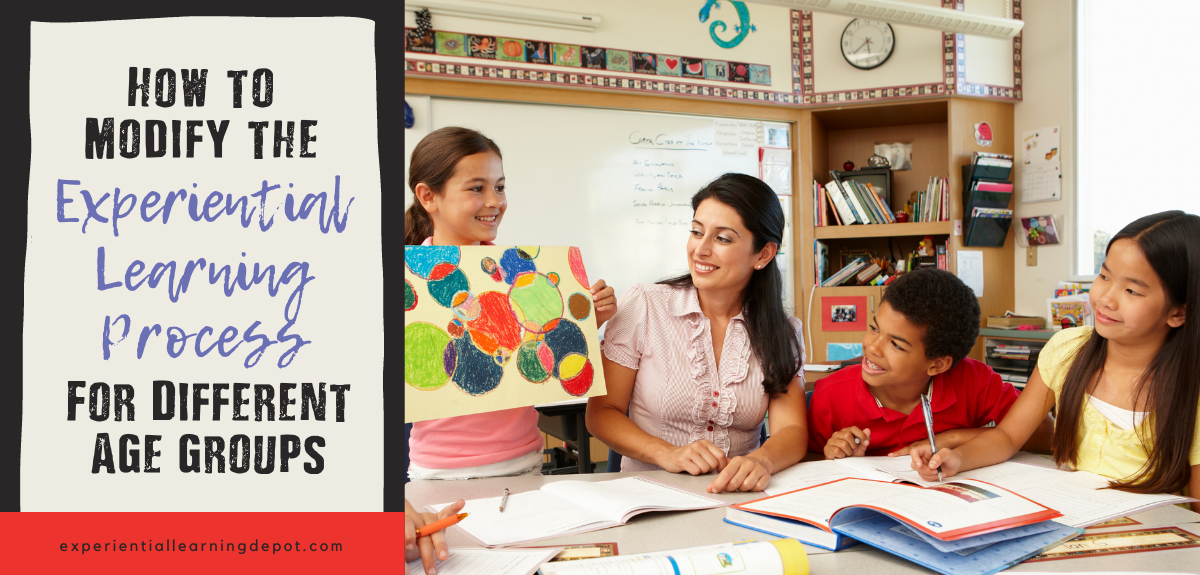
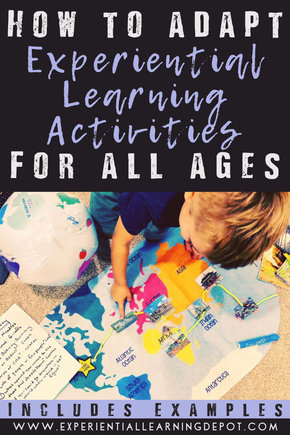
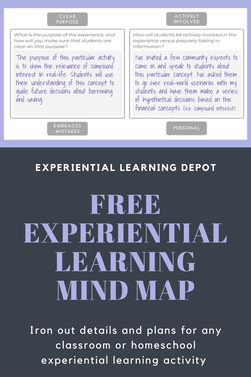
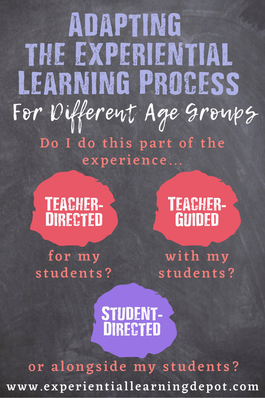
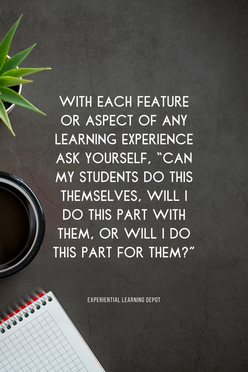
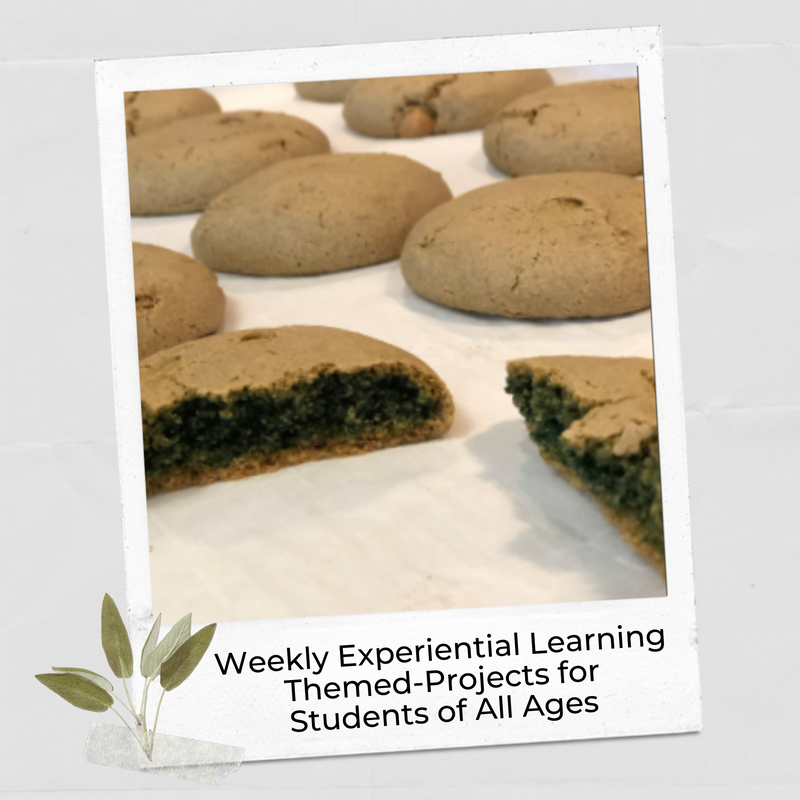
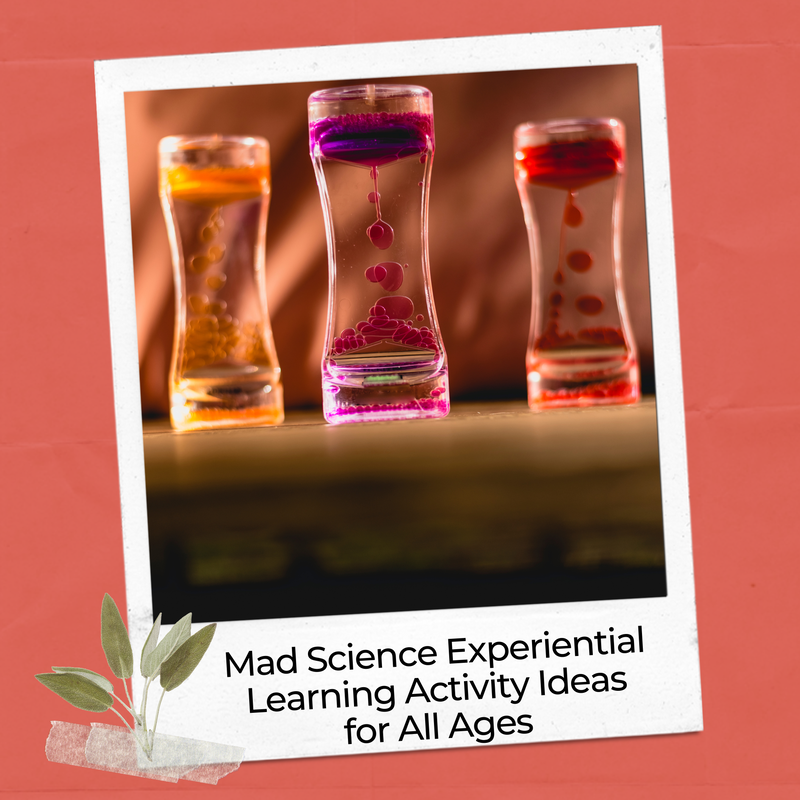
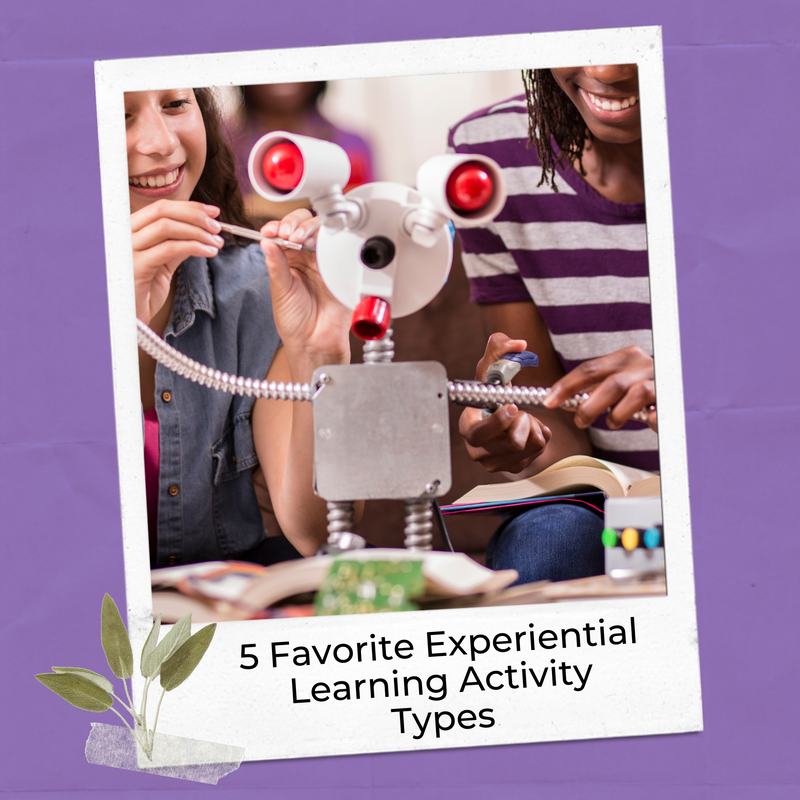
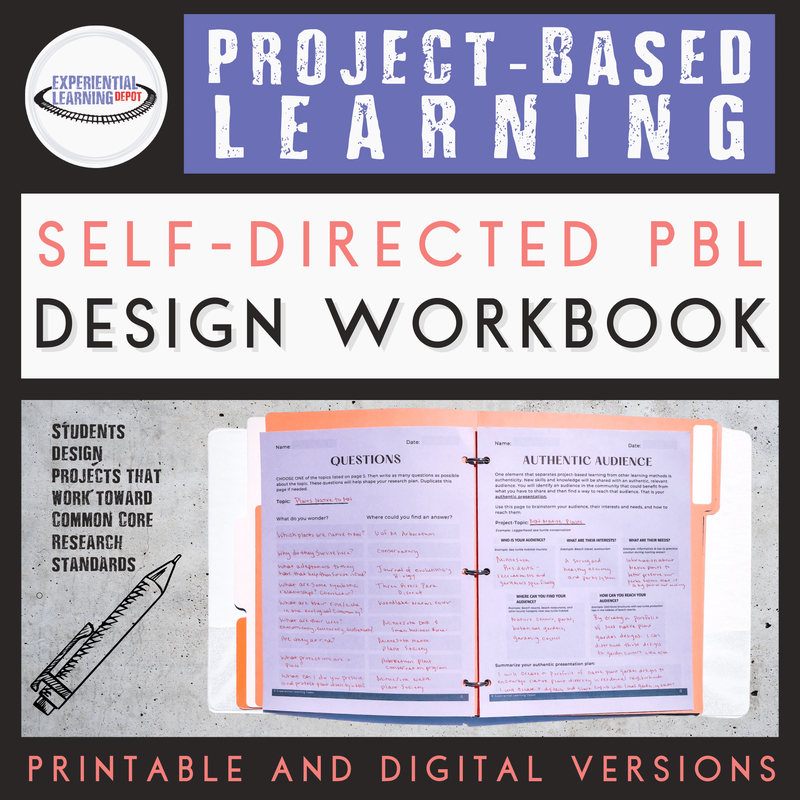
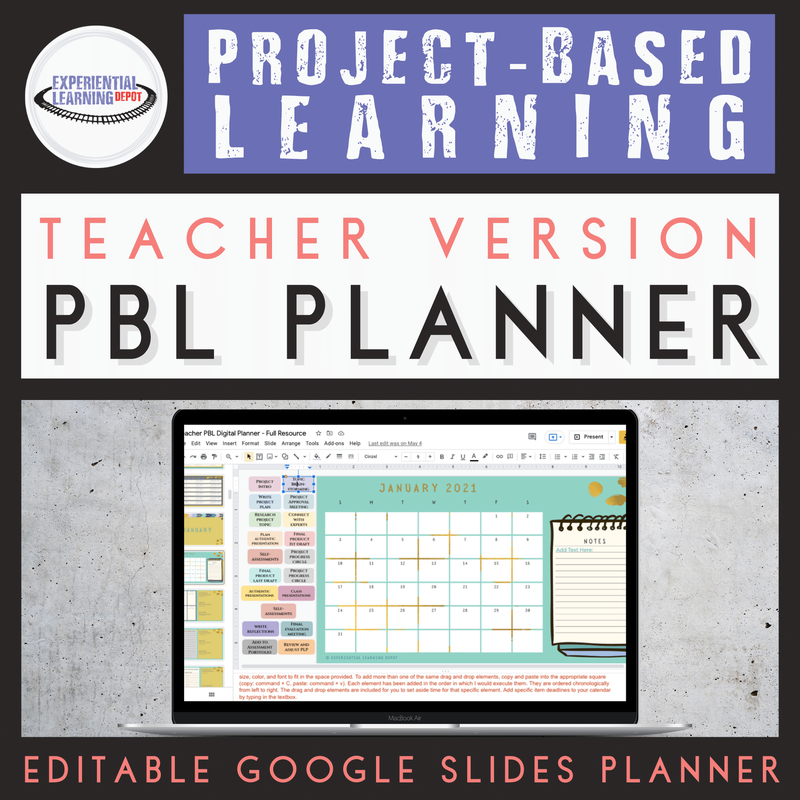
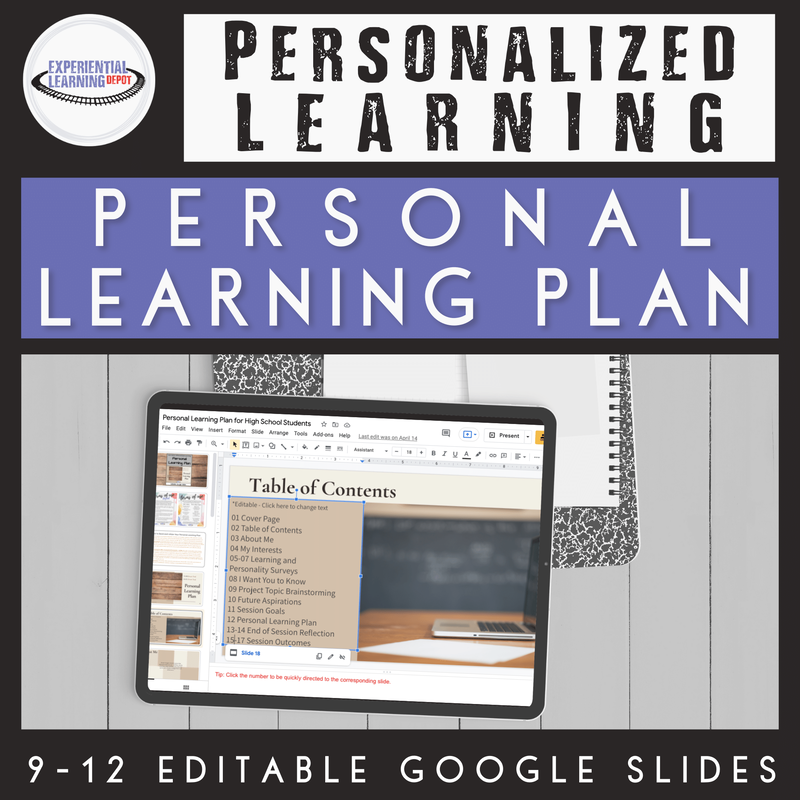


 RSS Feed
RSS Feed